GENUINE BUDDY SERIES
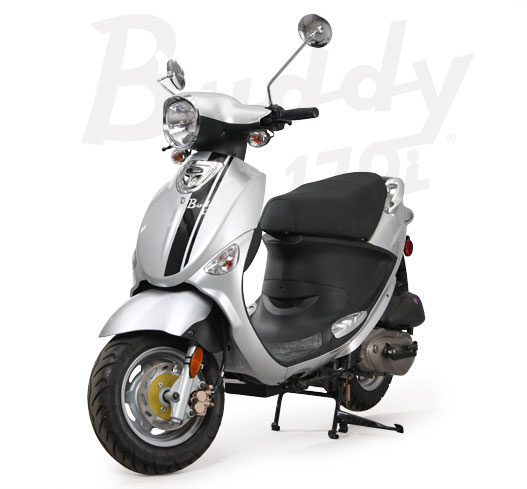
Model Background
The Buddy scooter is manufactured for Genuine via a collaboration with PGO Scooters of Taiwan (not to be confused with the Chinese manufacturers). PGO is one of the four main Taiwanese makers (along with Kymco, SYM and TGB) who have been rapidly refining their scooters and competing globally with the Italian and Japanese brands. The Buddy is based on PGO’s PA model which comes in a variety of engine displacements with commensurate model codes (ie. PA50, PA125 and PA150). PGO also sells this model through various other distributors worldwide, where it receives other names like the Metro (Canada), Bubu (Taiwan) and Ligero (UK and elsewhere).
 Versions and Updates
Versions and Updates
The first Buddy’s arrived in the USA in time for the 2006 model year. That first year the Buddy could be had in 50cc ($1900) and 125cc ($2500) calibers. Since then a number of versions have been added and prices have evolved upwards a notch, but the basic Buddy design remains intact as of 2019.
2007 saw Genuine add the higher end Buddy ‘International’ with its Euro inspired two color paint schemes. Genuine also tweaked the lighting, headsets and mirrors on all the Buddy’s and added a 12V charger under the seat for your phone, laptop or music player.
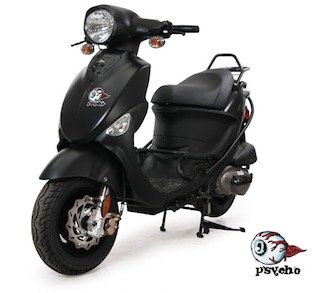
2009 marked the last year of the Buddy International and the introduction of the performance oriented Buddy Blackjack 150. The follow up to the Blackjack was the Psycho Buddy which hit the market for 2012 only. The fuel injected Buddy 170i also debuted for 2012. More recently, the Lemonhead Buddy 50 was introduced as a 2013 model in a limited run of 200. For 2015 Genuine announced the limited edition Buddy Riot in both 50 and 125 sizes. All told there has been eight variants of the Buddy:
- Buddy (Regular) – 50cc and 125cc sizes. Solid colors. Sold 2006 to present.
- Buddy International – Gains oil cooler, white wall tires, a larger 150cc engine (except 2007) and the two tone color schemes called ‘Pamplona’, ‘St. Tropez’ and ‘Italia’ (Spain, France and Italy). Sold 2007 – 2009.
- Buddy Lil’ International – 50cc version of the Buddy International. 2008 – 2009, 2013 – 2014. St. Tropez colors not offered.
- Buddy 50 International – Same as Lil’ International, just a minor name change starting in 2015.
- Lemonhead Buddy – 2012, 50cc only. 2012. Limited run of 200. Yellow ‘Lemonhead’ (candy) inspired art.
- Buddy Blackjack 150 – 2009. Premium performance Buddy. Flat black paint job, solo seat, white wall tires, performance brakes, suspension and exhaust. $3499
- Psycho Buddy – Limited edition (174 made for 2012). Successor to the Blackjack, but at a lower MSRP due to its use of the 125cc engine and regular brakes. Gets a similar flat black look.
- Buddy 170i – Dual color paint schemes, fuel injection and the largest 170cc engine. New for 2012.
- Buddy Riot – 2015. Gunmetal paint with black accents. 50 and 125cc. Performance suspension. 2015 only.
- Buddy Anniversary – 2016. Diamond blue paint, 50cc and 125cc, upgraded forks, front disc and brake levers, low profile seat.
- Buddy Eclipse – 2017. 50 and 125cc. Matte black paint and blacked out components except for red seat piping and brake calipers.
Engines
The 50cc Buddy scooters use a horizontal Minarelli engine. This basic design is shared with the other 50’s from Genuine and a host of other scooter sold worldwide. The Minareli design is the worlds most popular 2-stroke 50cc engine for a scooter application, so it’s been widely used by makers such as Aprilia and Yamaha. Stock, the Buddy 50 is restricted to 30mph which makes it eligible for the desirable ‘moped’ legal treatment in quite a few states. Often registration and/or a motorcycle licence is not required, although if you derestrict your Buddy to 48mph you’ll want to look into obtaining these.
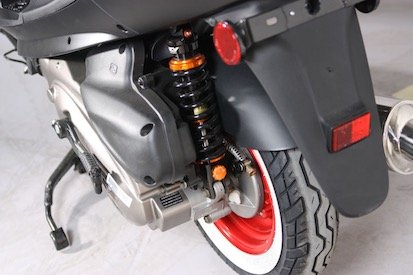
The Buddy 170i does benefit from fuel injection, so it typically posts the better milage than the 125 and 150 models despite its extra displacement. You’ll typically see milage in the mid 80’s under mixed use.
Top speeds for the Buddy’s range from a restricted 30mph (50cc) to 60mph (125) and even 65-70mph (150, 170i models). Your Buddy may appear to be faster still, but the speedometers on the Buddy’s are widely reported to be 10-14% optimistic. The smallest Buddy is a powerful machine that can spool up to 48mph once unrestricted, but if power is really what you’re after then the bigger Buddy’s are the way to go. With the 125-170 models, you’ve got virtually the same lightweight Buddy body straddling an engine that’s 2-3 times the size, so acceleration is reputed to be outstanding.
Design and Amenities
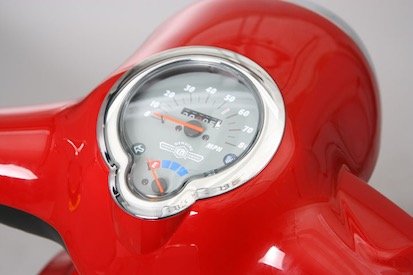
The Buddy does a lot of things right that combine to make it one of the most popular modern scooters. The price is darn affordable, the entire suite of engines are peppy for their size, the style is unique and urban and the scooter is physically small which makes an easy and confident machine. There’s also a front disc brake which you don’t find on nearly as many 50’s as you should. The performance Buddy’s (Blackjack, Psycho) take this even further with high end suspension goodies and upgraded brakes that reputedly offer best in class stopping and turning.
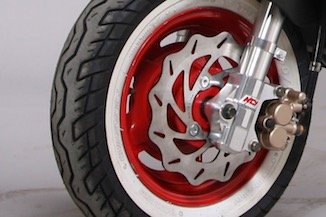
Comparison
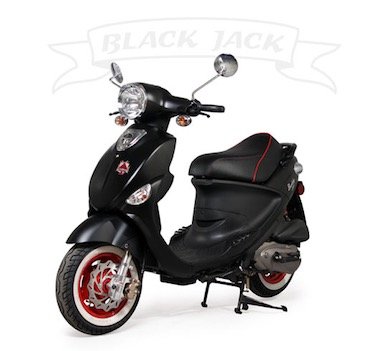
Genuine has been successful with the Buddy because they’ve designed a well appointed scooter (front disc, peppy engines) that is fun to ride and affordable. The smallest Buddy 50 uses a 2-stroke engine, so heavier riders and the performance driven will prefer this over a 50cc 4-stroke, while those looking for rock bottom fuel economy might want to check out some of the slower 4-stroke 50’s out there.
The numerous iterations of the Buddy show the flexibility Genuine has as a smaller company. They can create small runs of scooters like the 174 Psycho Buddy’s built for 2012, and in doing so cater to a wider range of scooterists than larger brands which often sell just one or two variants. With displacements of 50, 125, 150 and 170cc and a number of different takes on the Buddy style, it’s easy to see why so many people find a Buddy that works for them.
Pros:
- Wide range of versions, color options and accessories
- Spunky motors
- Well rounded package
Cons:
- Could use a little more storage
- Optimistic speedometer
Links:
Service Manuals for your Buddy 50 and Buddy 125
MotorscooterGuide Forums – Visit the forums on this site to chat about this scoot.
JustGottaScoot Reviews the Buddy 125, Buddy International, Blackjack and Buddy 170i
Modern Buddy – The place to go for online Buddy talk.
Key Specs:
- Engine: 2-stroke 50cc or 4-stroke 125/150/170cc air cooled single.
- Power: 3.1 HP @ 6500 RPM (50cc), 9.5 HP @ 7750 RPM (125cc)
- Bore x Stroke: 40.0 x 39.2 (50cc), 51.5 x 60.0 (125cc), 61.0 x 57.8 (170cc)
- Compression: 6.8:1 (50cc), 9.2:1 (125cc), 10.5:1 (170cc)
- Transmission: CVT
- Fuel Delivery: Carb except fuel injection on Buddy 170i.
- Wheelbase: 47.63”
- Weight: 198 lbs (50), 220 lbs (125), 243 lbs (170)
- Starter: Electric and Kick (no kickstarter on fuel injection models)
- Seat height: 29.7”.
- Fuel Tank: 1.75 gallon
- Tires: 90/90-10 (50 and 125), 100/90-10 (170)
- Front Brake: 190mm disc (170)
- Rear Brake: Drum
- Front Suspension: 2.2” travel, telescopic Fork
- Rear Suspension: 2.4” travel, single shock
Colors:
- Buddy 50 / 125: Sunset, Cream, Potent Pink, Tangerine, Black, Sea Foam Green, Powder Blue, Lavender, Lime Green, Turquoise, Red, White, Royal Blue, Titanium
- Buddy Lil’ International: Italia (Light & Dark Green), Pamplona (Cream & Blood Red), Brit (Blue/White)
- Buddy International: Italia (Light & Dark Green), Pamplona (Cream & Blood Red), St. Tropez
- Buddy 170i: Mocha, Oxford/Brit Racing Green, Zephyr Silver, Matte Black, Brit, Pamplona, Italia
- Buddy Blackjack: Flat Black
- Lemonhead Buddy: White with yellow accents
- Psycho Buddy: Flat Black
- Buddy Riot: Matte Platinum Metallic

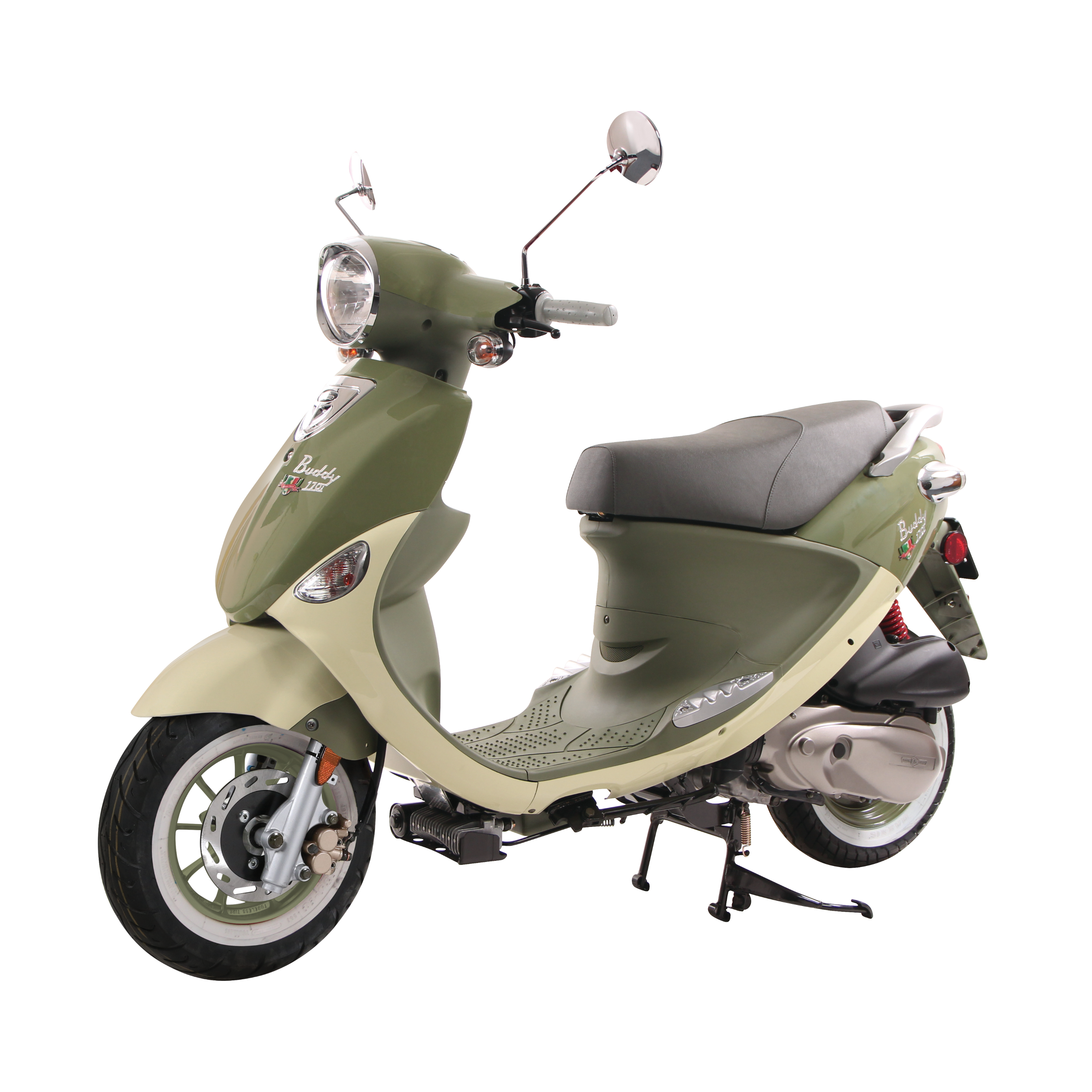
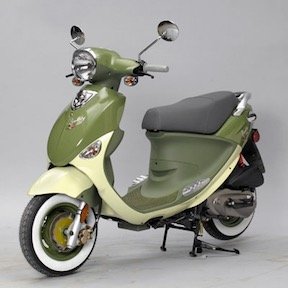 Versions and Updates
Versions and Updates